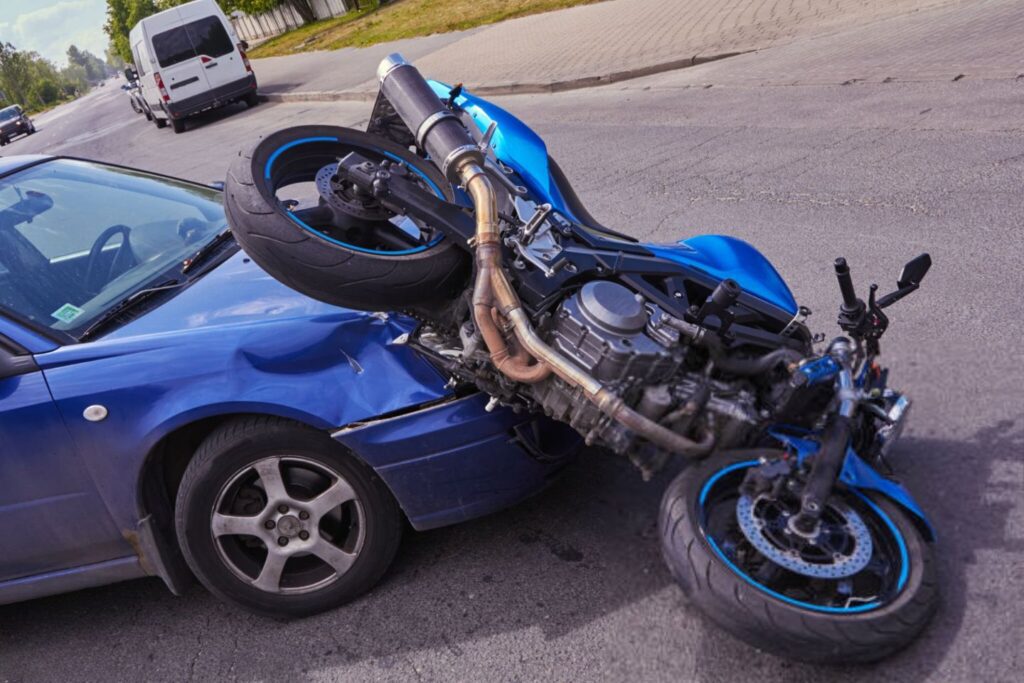Motorcycle accidents in Valencia pose a pressing concern. California’s statistics show an overall increase in fatal and severe motorcycle accidents from 2011 to 2015. This makes the need for legal awareness more important than ever.
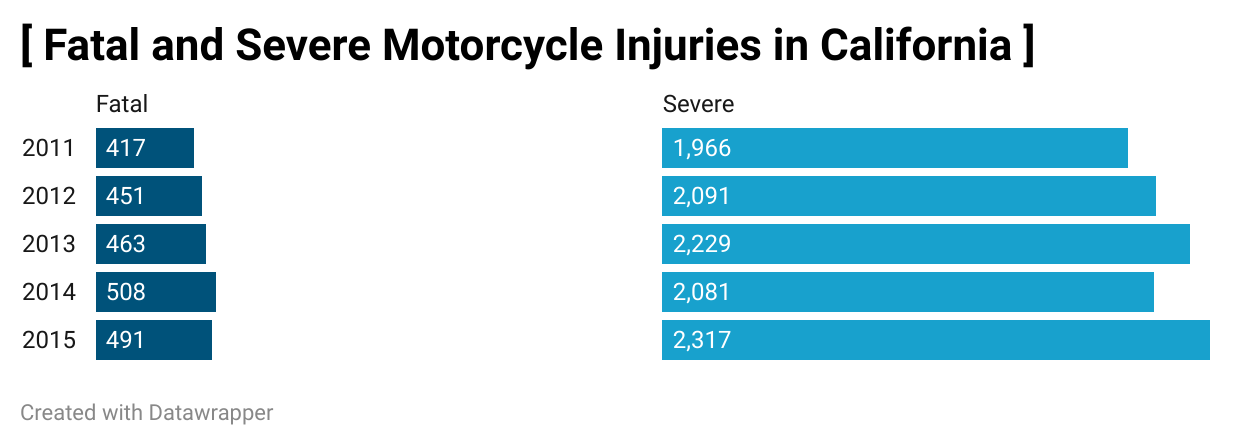

If you have been a victim of a motorcycle accident in Valencia, know that you don’t have to navigate the legal complexities alone. This blog provides clear, actionable advice for those affected by motorcycle accidents.
Read on to seek guidance regarding immediate steps to take, relevant legal codes, and types of compensation you may be entitled to.
What to do After a Motorcycle Accident in Valencia


If you’re involved in a motorcycle accident in Valencia, taking the right immediate actions is crucial for your health and any future legal claims. Here’s a breakdown of the steps you need to follow after a motorcycle accident:
Secure the Scene
After an accident, ensure your immediate safety and prevent further damage or injury. If your motorcycle is operable and you’re not seriously injured, move it to the side of the road to avoid obstructing traffic and to safeguard the accident scene.
However, if the motorcycle is inoperable or moving it may lead to further harm, leave it and move to safety. To alert oncoming traffic, set up reflective triangles if you have them, as outlined in the California Streets and Highways Code Section 21400.
Call for Help
Dialing 911 is a legal and practical necessity. The dispatcher will send the appropriate emergency services to your location. More so, law enforcement will document the incident in a police report which is vital when you file an insurance claim.
The California Highway Patrol or local police jurisdiction will fill out Form SR-1 which is an official accident report used for accidents within California. This form is required when there is property damage of more than $1,000 or if anyone is injured or killed.
To complete the SR-1 form accurately, you’ll need to compile:
- The exact location and timing of the accident
- Contact details of the other driver: name, address, and date of birth
- License details of the other driver: issuing state and driver’s license number
- Vehicle information of the other driver: license plate number and issuing state
- Insurance specifics of the other driver: company name, policy number, and expiration
- Vehicle owner’s name and address for all vehicles involved
- A detailed account of injuries or property damage
- Personal information of any injury complainants post-accident.
Gather Evidence
Collecting evidence at the scene is essential. Photograph the vehicles involved from multiple angles, ensuring you capture the conditions of the road, traffic signals, and any debris or skid marks. If possible, take videos to give a full picture of the environment post-collision. Record the weather conditions and any other factors that may have contributed to the accident.
Concrete evidence helps you build a strong case against the other party, thereby maximizing your compensation.
Exchange Information
As per California Vehicle Code Section 16025, all drivers involved in a collision must share their information. This includes their name, current residential address, driver’s license number, vehicle identification number, evidence of financial responsibility, and insurance information.
Do this exchange politely without discussing fault or specifics of the incident to avoid any statements that may be used against you later in your claim.
Seek Medical Attention
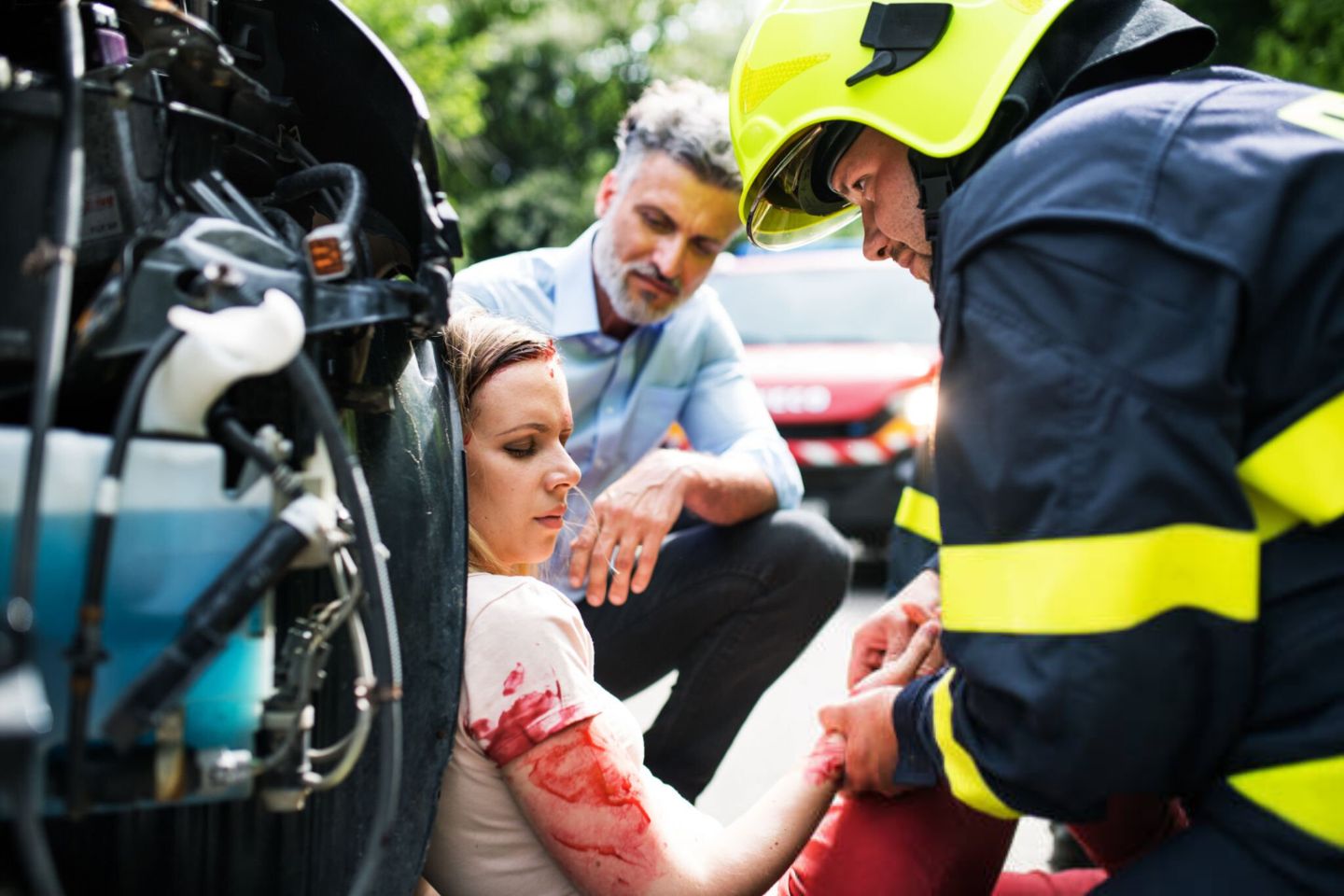

It’s critical to prioritize your health after an accident by seeking medical attention immediately. Delaying a medical check-up can not only be detrimental to your health but could also weaken your legal position.
Even if the injuries seem minor, it’s essential to have a medical professional evaluate you. Some injuries, such as whiplash, concussions, or internal bleeding may have delayed symptoms. Having a medical record that shows you sought immediate care proves a direct connection between the accident and your injuries. This serves as crucial evidence when seeking compensation.
Don’t navigate the aftermath of an accident alone. Let the Personal Injury Center link you with experienced personal injury attorneys in your area. Reach out to us to fight for your rightful compensation.
Motorcycle Accident in Valencia: Understanding Key Legal Codes
Understanding the legal landscape after a motorcycle accident in Valencia is crucial. Here are key California legal codes that can matter while pursuing your legal claim.
Comparative Negligence
Comparative Negligence California operates under a system known as “pure comparative negligence,” as codified in California Civil Code 1431.2. This means that if you’re involved in an accident, you can still recover damages even if you are partially to blame.
Your compensation will be decreased in proportion to your degree of fault. For instance, if you are found to be 30% responsible for the accident, your recoverable damages will be decreased by 30%.
This law is significant when negotiating settlements with insurance companies or when a court is determining awards. It allows for flexibility and fairness in cases where multiple parties may have contributed to an accident.
DUI Laws
Driving under the influence (DUI) is a serious offense in California. Per Vehicle Code 23152, it is illegal to operate a vehicle with a blood alcohol concentration (BAC) of 0.08% or higher. If a DUI driver causes an accident, the penalties can be severe including jail time, fines, and license suspension.
If the other driver involved in your motorcycle accident was under the influence, this could significantly affect the outcome of your claim. The DUI charge could serve as evidence of negligence, potentially increasing the compensation you’re entitled to due to the other party’s unlawful behavior.
Statute of Limitations
As stipulated in the California Code of Civil Procedure 335.1, you have a two-year period from the date of the motorcycle accident to file a personal injury lawsuit. If you’re only claiming property damage, the limit extends to three years. This statute ensures a fair timeframe for both plaintiffs and defendants to gather evidence and present their cases.
However, there are specific conditions under which these standard limitations might not apply, effectively pausing the clock.
These exceptions include:
- The responsible party is out of state: If the person at fault moves out of California, the period they’re away may not be included in the time limit for filing a lawsuit.
- The injured person is a minor: If the victim is a minor, the countdown to the legal deadline doesn’t start until they turn 18, giving them until their 20th birthday to file a lawsuit.
- The plaintiff is mentally incapacitated: If the injured party is not mentally competent to pursue a claim, the statute of limitations may be paused until the period of incapacitation ends.
- The injury was not discovered immediately: In cases where the injuries were not apparent right after the accident and were only discovered later, the statute might be extended under the “discovery rule.” This allows the lawsuit to be filed within a certain period (usually one year) after the injury is discovered.
- Claims against government entities: If you’re filing a claim against a government agency or employee, you must file an administrative claim within six months of the incident.
Mandatory Insurance Coverage
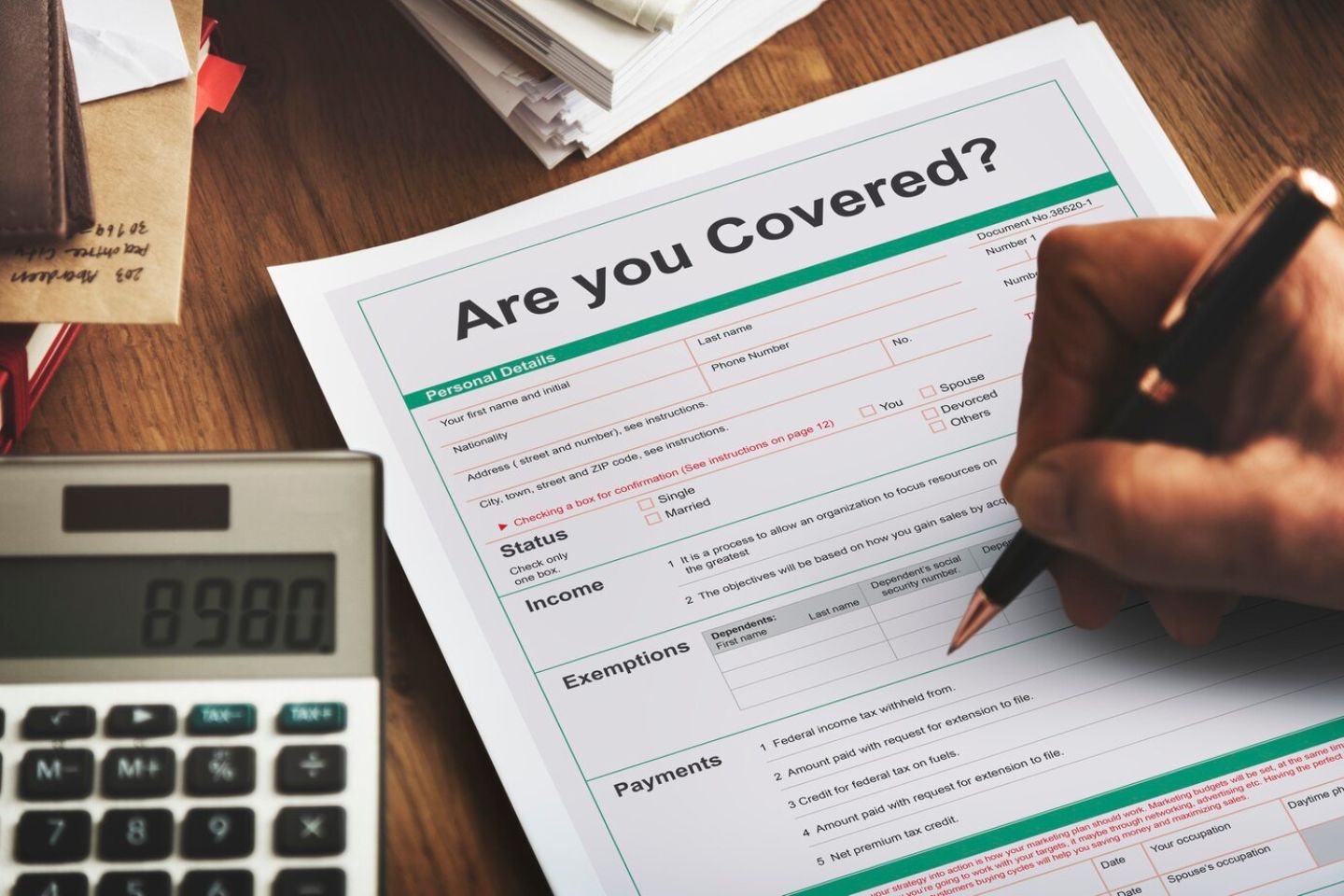

Under Vehicle Code 16021, all motor vehicle operators, including motorcyclists, must carry proof of financial responsibility, usually in the form of insurance.
The minimum liability coverage required in California is as follows:
- $15,000 for injury/death to one person
- $30,000 for injury/death to more than one person
- $5,000 for damage to property
Failure to carry this can result in fines and suspension of your motorcycle registration and/or driver’s license.
Helmet Laws
California Vehicle Code 27803 requires all motorcycle riders and passengers to wear helmets. Not wearing a helmet can negatively impact your compensation.
Moreover, it can increase the risk of severe injury in an accident. The National Highway Traffic Safety Administration (NHTSA) estimates that helmets are about 37% effective in preventing motorcycle deaths and about 67% effective in preventing brain injuries.
For support through your legal journey, contact the Personal Injury Center. We’ll link you to a knowledgeable personal injury attorney in your area and help you seek justice.
Types of Compensation in Valencia Motorcycle Accident Claims
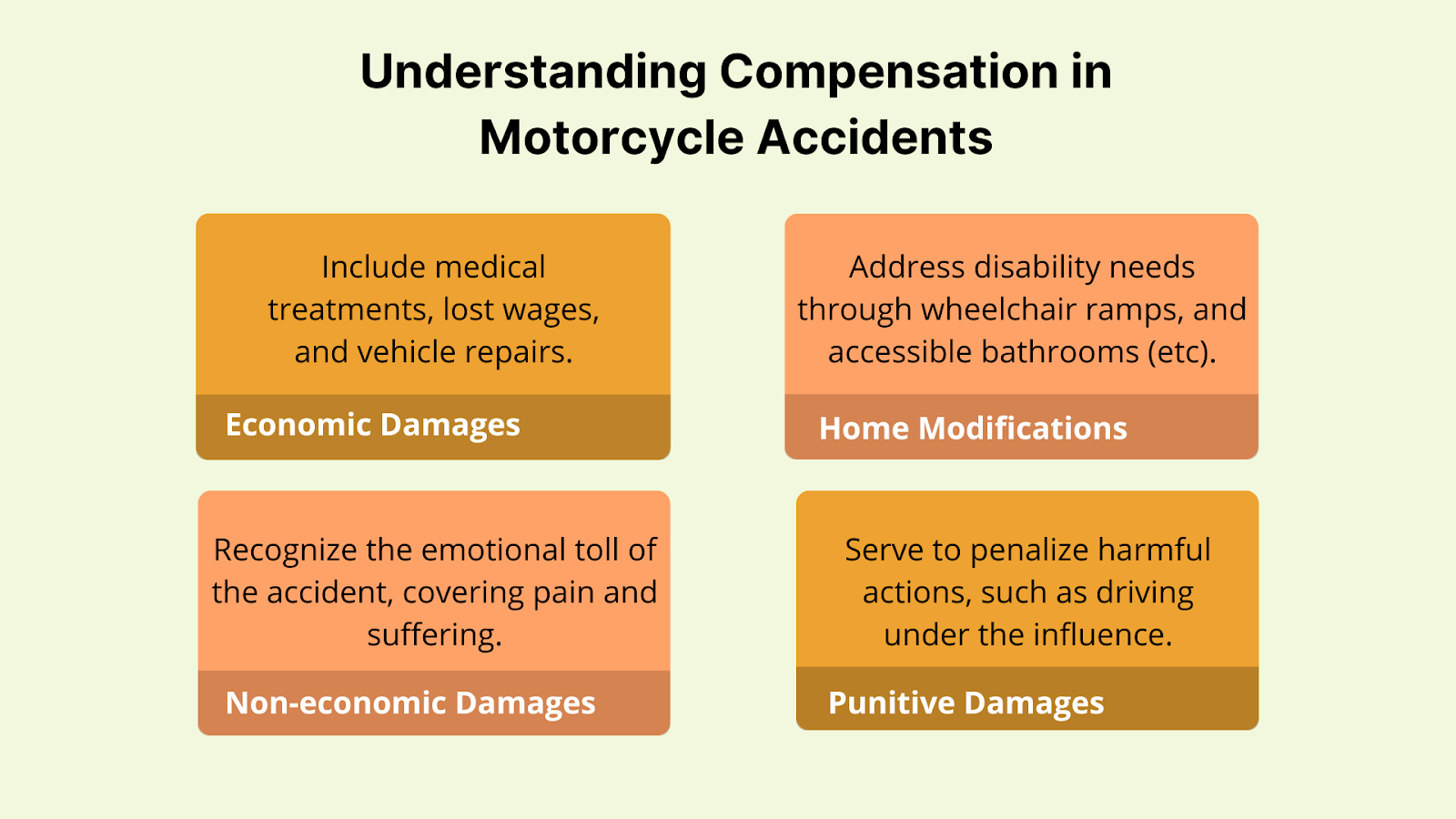

Navigating the aftermath of a motorcycle accident in California involves understanding the various types of compensation that might be available. California Civil Code Section 1431.2 details the provisions for recovering damages in personal injury cases. It emphasizes the right to compensation for both economic and non-economic damages.
These financial compensations, known as damages, are designed to restore the injured party to the position they were in before the accident.
Here’s a breakdown of the different types of damages that can be pursued in a personal injury claim following a motorcycle accident.
Economic Damages
- Medical Expenses: Covers the cost of medical treatment related to injuries sustained in the accident. This includes past, present, and future medical bills such as emergency room visits, rehabilitation costs, surgery costs, and hospital stays.
- Lost Wages: Compensates for the income lost due to time off work for recovery. If the injuries impact your ability to work in the future, you may also be entitled to loss of earning capacity.
- Property Damage: This covers the expenses for fixing or replacing your motorcycle and any belongings damaged in the crash.
Home Modification Costs
Injuries from motorcycle accidents can sometimes result in permanent disabilities, necessitating significant changes to one’s living environment. Compensation for home modification costs addresses this need by covering expenses related to adapting a home to accommodate these disabilities, such as:
- Wheelchair Ramps: Installation of ramps for home access.
- Bathroom Modifications: Adjustments to make bathrooms accessible, including walk-in tubs or showers and grab bars.
- Stairlifts: Installation of devices to assist with navigating between floors.
- Widened Doorways: Remodeling to allow for wheelchair or walker access.
Non-Economic Damages


- Pain and Suffering: Provides payment for the physical and emotional discomfort caused by the crash.This includes compensation for mental anguish, loss of enjoyment of life, and emotional distress.
- Loss of Consortium: Compensation can be sought if injuries harm the connection between the injured individual and their partner. This covers the loss of closeness, love, and assistance.
Punitive Damages
Punitive damages represent a critical component of the legal system’s response to particularly reckless behavior. Unlike compensatory damages, which aim to cover the direct costs of an accident’s impact, punitive damages serve a dual purpose:
- Punishment: These damages are levied as a form of punishment for the defendant’s actions. These actions go beyond mere negligence to include intentional harm and recklessness.
- Deterrence: By imposing a financial penalty, the legal system aims to deter the defendant from engaging in similar conduct in the future.
For punitive damages to be awarded in a motorcycle accident case, the plaintiff must demonstrate that the defendant’s behavior harmed the plaintiff with willful and conscious disregard for their rights or safety. This could include cases where the defendant was driving under the influence of alcohol or drugs.
Seeking compensation after an accident can seem overwhelming. Reach out to the Personal Injury Center for expert guidance. Our team will promptly connect you to a personal injury lawyer in your region, helping you protect your rights and get your due compensation.
Key Takeaways
|
Frequently Asked Questions
How long do you have to make an accident claim in California?
In California, you have a maximum of 2 years to submit a claim for personal injury and 3 years to file for property damage.
What is the minimum liability coverage for motorcyclists in California?
The minimum liability coverage for motorcyclists in California is $15,000 for injury/death to one person, $30,000 for injury/death to more than one person, and $5,000 for property damage.
How much compensation can you receive for a motorcycle accident in California?
Compensation varies widely based on the accident’s specifics. It can range from minor settlements covering medical bills to substantial awards for severe injuries, lost wages, and more.



